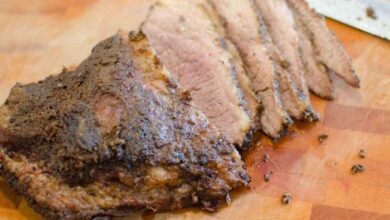
Beef and Bean Chimichangas: A Taste of Mexican Tradition
Beef and bean chimichangas are a beloved Mexican dish, known for their crispy, flavorful exterior and savory filling. These deep-fried tortillas, filled with a hearty mix of seasoned beef and beans, are a staple in Mexican cuisine and have become a popular comfort food in many parts of the world.
But where did this delicious dish come from? What are the secrets to making the perfect chimichanga? And what makes it so special?
The story of the chimichanga is intertwined with the rich culinary history of Mexico. It’s believed to have originated in the Sonoran Desert region, where the use of tortillas as a wrapping for various fillings was common. The modern-day chimichanga, as we know it, likely emerged in the mid-20th century, with the introduction of deep-frying techniques.
History and Origins

The chimichanga, a beloved Mexican-American dish, boasts a fascinating history rooted in both tradition and innovation. While its exact origins remain somewhat shrouded in culinary folklore, its evolution reflects the dynamic nature of Mexican cuisine, influenced by both indigenous practices and international encounters.
The Rise of the Chimichanga
The chimichanga’s story is often traced back to the Sonoran Desert region of Mexico, where the Sonoran-style burrito, a large flour tortilla filled with various ingredients, was already a popular staple. In the early 20th century, the Sonoran burrito, typically enjoyed as a street food, began to evolve into the chimichanga.
The transformation is attributed to the ingenuity of restaurant owners in Arizona, particularly those in the city of Tucson. It’s believed that these owners, seeking to offer a more unique and appealing dish, began deep-frying the Sonoran burrito, creating a crispy and flavorful treat.
This innovative approach, combined with the use of various fillings, quickly captured the imaginations of diners, leading to the chimichanga’s widespread popularity.
Beef and Bean Filling: A Culinary Fusion
The iconic beef and bean filling found in many chimichangas represents a fascinating blend of culinary traditions. The use of beef, a staple in many Mexican dishes, reflects the influence of Spanish colonization, which introduced cattle to the region. The addition of beans, a cornerstone of Mexican cuisine, reflects the indigenous culinary legacy, where beans have long been a source of sustenance and flavor.The combination of beef and beans, often seasoned with spices like cumin, chili powder, and oregano, creates a harmonious flavor profile that appeals to a wide range of palates.
This filling, which is often cooked with onions and garlic, adds a layer of complexity and depth to the chimichanga, making it a satisfying and flavorful dish.
Health and Nutritional Aspects: Beef And Bean Chimichangas

Chimichangas, while undeniably delicious, are not exactly known for being a health food. However, understanding the nutritional content of this dish can help you make informed choices and potentially enjoy it in a more balanced way.
Nutritional Content of Beef and Bean Chimichangas
The nutritional profile of a beef and bean chimichanga can vary significantly depending on the recipe, ingredients, and preparation methods. Generally, a typical chimichanga contains a significant amount of calories, fat, and sodium. The beef filling adds protein and iron, while the beans contribute fiber and plant-based protein.
However, the fried tortilla and the often-generous use of cheese and sour cream significantly increase the fat and calorie content.
Health Implications of Regular Consumption, Beef and bean chimichangas
Regular consumption of chimichangas, especially those made with large amounts of saturated fat, can contribute to several health concerns:* Weight Gain:The high calorie and fat content can lead to weight gain over time, particularly if consumed frequently.
Cardiovascular Disease
The saturated fat and sodium in chimichangas can increase the risk of cardiovascular disease.
Diabetes
The high carbohydrate content can contribute to insulin resistance and increase the risk of developing type 2 diabetes.
Recommendations for Healthier Versions
While a chimichanga might not be the healthiest choice, there are ways to make it more nutritious:* Choose lean beef:Opt for lean ground beef or substitute it with plant-based alternatives like lentils or black beans.
Reduce the cheese
Use less cheese or choose a lower-fat variety.
Skip the sour cream
Substitute sour cream with plain yogurt or avocado for a healthier fat source.
Bake instead of fry
Baking the chimichanga instead of frying it significantly reduces the fat content.
Use whole wheat tortillas
Choose whole wheat tortillas for added fiber.
Control portion sizes
Enjoy chimichangas in moderation and be mindful of portion sizes.
Beef and bean chimichangas are a delicious and satisfying meal, but sometimes you need something a little lighter and healthier. That’s where these oatmeal chia seed cookies come in! They’re packed with fiber and nutrients, and they’re the perfect way to satisfy your sweet tooth without feeling guilty.
Plus, they’re a great way to use up leftover oatmeal, which is always a bonus. But let’s be real, nothing beats the cheesy, savory goodness of a good chimichanga!
Beef and bean chimichangas are a classic comfort food, but sometimes you crave something a bit more luxurious. For those nights, I recommend checking out dry aged prime rib. The rich, buttery flavor of the dry-aged meat is truly unforgettable, and it pairs perfectly with a bold chimichanga sauce.
But don’t worry, even if you’re sticking with the chimichangas, they’re still a delicious way to enjoy a hearty and satisfying meal.
Beef and bean chimichangas are a hearty and flavorful dish, perfect for a satisfying meal. While they’re packed with protein and beans, sometimes I crave something lighter and more comforting. That’s when I turn to a steaming bowl of miso soup with shiitake mushrooms.
The earthy umami of the mushrooms and the soothing warmth of the broth are a welcome contrast to the richness of the chimichangas, creating a delightful balance on my palate.






